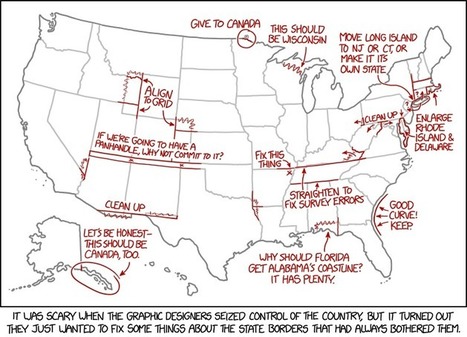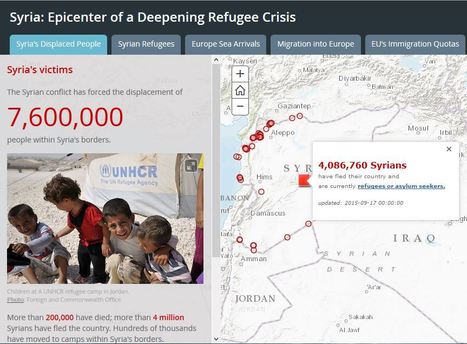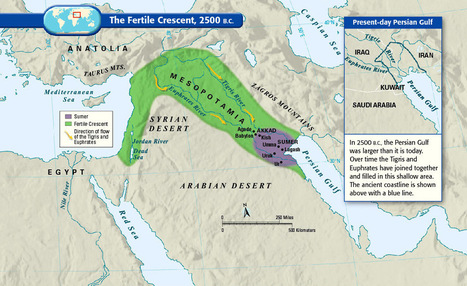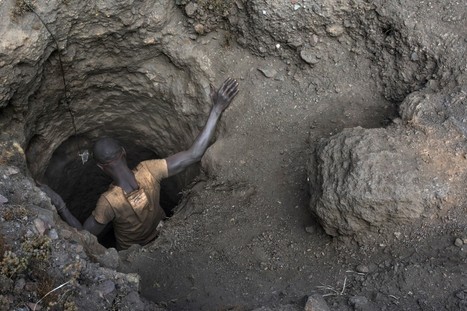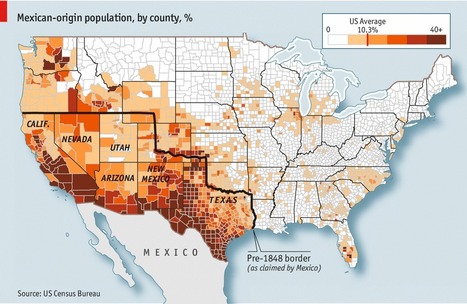Get Started for FREE
Sign up with Facebook Sign up with X
I don't have a Facebook or a X account
 Your new post is loading... Your new post is loading...
 Your new post is loading... Your new post is loading...
Tanya Townsend's curator insight,
November 23, 2015 11:42 AM
This story map is a great visual of the current refugee crisis. This would be a helpful aid in describing the geographical barriers refugees face and how it affects them. For example the map shows where highest concentrations of deaths occur, naturally it is in the ocean. The ocean is a barrier for fleeing refugees. Think about how different landscapes and land forms can affect refugees available paths to flee

Alex Vielman's curator insight,
November 23, 2015 3:17 PM
Maps like the ones posted in this article, really helps people to understand and break down deeply of understanding the entire region as a whole. Visualization is very important in geography when trying to understand the region people are talking about. this region as goes down to the Mesopotamia Era. It is important to know, how the culture was in this area to how it differentiated during the Ottoman Empire. During the first couple of maps, we can begin to see the division of the entire region. As you go on, we begin to notice the divisions between people, religion, language between states and in-states. There is so much information to know about the Middle East region and it may be even harder to understand due to the tons of changes and separations, but it is important to understand these divisions like the Sunni's and the Shi'ites in order to fully explain the development and the current situations that are occurring in this region as we speak. 
Matt Ramsdell's curator insight,
December 7, 2015 5:18 PM
These 40 maps are a very interesting way of showing how people have traveled around and moved about the Earth from the time of the fertile crescent era to the people of today. It shows us the paths that people have taken to move to a new location. How they used the Meditteranean Sea to move from one side to the other. It also shows how the Tigris and Euphrates came together to form a smaller area of the Persian gulf. This led to smalled economic growth because now there is less land for imports and exports. 
Kelvis Hernandez's curator insight,
December 12, 2018 10:49 PM
Being able to explain any region in just 40 maps is a very bold claim. While no one would be able to do this Vox was able to make a very interesting set of historically, culturally, and politically themed visualizations of this continuously changing part of the world. Some maps show the borders of an empire past, others discuss the many ethnic groups that call the region their home, and yet another discusses the importance of oil and who has it. |
David G Tibbs's curator insight,
March 29, 2018 3:36 PM
We take the luxuries that we have for granite and forget where it comes from, or who pays the physical price for us to have them. One example is electronics and the Congo. The Congo is a country filled with Colbolt which is critical to lithium batteries which powers majority of products that are rechargeable. The price they pay is unsafe mining conditions, indecent wages, and environmental hazards to local communities. 60 percent of the cobalt used today comes from the Congo, and while some companies track it to make sure its "clean" some companies do not check its origins. In 2010 there was a push to add cobalt to a list of resources that come from the Congo to be from a militia free mine. Individual companies have started to be stricter about where they get their Cobalt it's still not mandatory under international law. However with the demand for cobalt is increasing due to more electric power styling for vehicles and other products. In order to meet these demands the cobalt will continue to come from abused people until companies or international law limits and outlines how to deal with the cobalt question. 2
Douglas Vance's curator insight,
April 21, 2018 2:10 PM
Given the absurd amount of minerals present in the country, the Democratic Republic of the Congo should be basking in immeasurable wealth. However, as shown by this inetractive and enormously in-depth piece by the Washington Post, the country constantly struggles with child labor, water pollution, and widespread dangerous working condition because of the global demand for minerals like cobalt and copper.
David Stiger's curator insight,
November 10, 2018 4:05 PM
The Congo, like Venezuela, is another example of a post-colonial country rich in valuable natural resources whose people, ironically, live in abject poverty. The Congo is a victim of its own geographical blessings as the industrialized world's bottomless need for Congo's cobalt, copper, and other minerals has put this former colony of Belgium on the map. The Congo reportedly supplies half of the world's cobalt. With few other options for mineral sources, lithium-ion battery manufacturers turn a blind eye as Congolese "diggers" endure inhumane, dangerous, and unfair conditions to produce cheap cobalt. Companies have not reacted to this injustice because of a desire to maximize their profits. With Western consumers acting as indirect accomplices, China leads the pack of this neo-colonial process of exploiting the Congo for its valuable underground minerals. The Chinese companies offer so little money for the cobalt that workers are forced to put up with hazardous conditions and unbelievably low pay for their labor.
The problem lacks an easy solution because it is highly complicated by the forces of globalization and geographical factors. Congolese diggers obtain the raw materials, who sell it to Asian middlemen, who then sell it to big Chinese manufacturers. These manufactures produce rechargeable batteries to sell to Western companies like Apple and Samsung. These products are then sold all over the world. The long supply chain makes it difficult for consumers to feel and see how their actions are impacting the lives of other people. The companies who should be held accountable justify their business decisions because there are not sources of cobalt to turn to. If there were other sources, companies like Huayou Cobalt could turn to other sources that treat their workers better, forcing Congolese suppliers to raise their labor standards. A short-term remedy, it seems, would be to classify Congolese-based cobalt as a conflict mineral. Western countries should fine and punish companies that are linked to the unjust cobalt trade, forcing these companies to raise their standards.

Alex Smiga's curator insight,
August 10, 2017 6:51 AM
I say it all the time, culture does not respect boarders.
Nicole Canova's curator insight,
February 9, 2018 8:15 PM
Up until 170 years ago, a large portion of what is now the United States was actually controlled by Mexico. Remarkably, this is still reflected in the ethnic makeup of the population of that area, which covers all or part of 8 states (all of California, Nevada, Utah, Arizona, New Mexico, and Texas, and part of Colorado and Wyoming). Political borders may determine citizenship, but they are by no means a hard division of ethnicity or culture.

Brian Wilk's curator insight,
March 22, 2015 1:02 PM
This story of the Palestinians, Israel, Arabs, and Jews has its roots in Germany at the hands of one of the worst dictators the world has ever seen, Adolf Hitler. His ethnic cleansing of Jews via torture, the gas chamber, and starvation, is one of the bleakest times in recorded humanity. The remaining Jews were a people without a land and so it was agreed that Israel would be formed to provide a safe haven. However the land has been disputed, fought over, and the borders changed so many times that it no longer resembles the initial attempt to provide a refuge for the Jews. Ironically, 700,000 Palestinians had been displaced initially and now number 7,000,000 according to the article; all of them designated as refugees. There is no solve for the problems between the Arabs, Jews, Palestinians and Israel as too much blood has been spilled, and forgiveness is a forgotten word. How do you apologize or forgive for generations of bloodshed, displaced families, borders that constantly change, and religions that contradict one another? I'm glad that I wake every day in the USA. We have our own issues to resolve, but nothing approaches the contradictions and paradoxes this area of the world must live with every day. 
Claire Law's curator insight,
April 26, 2015 2:07 AM
A good refresher for teachers and a start for students 
Michael Amberg's curator insight,
May 26, 2015 11:25 PM
Its interesting to see another side to the story and what barriers are now in place from the two opposing cultures. |




